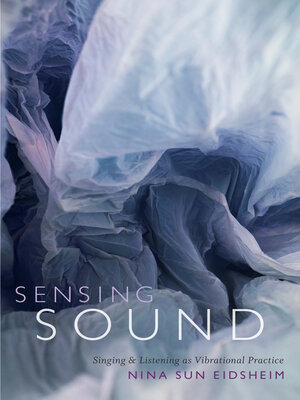Sensing Sound
ebook ∣ Singing and Listening as Vibrational Practice · Sign, Storage, Transmission
By Nina Sun Eidsheim

Sign up to save your library
With an OverDrive account, you can save your favorite libraries for at-a-glance information about availability. Find out more about OverDrive accounts.
Find this title in Libby, the library reading app by OverDrive.



Search for a digital library with this title
Title found at these libraries:
| Library Name | Distance |
|---|---|
| Loading... |
In Sensing Sound Nina Sun Eidsheim offers a vibrational theory of music that radically re-envisions how we think about sound, music, and listening. Eidsheim shows how sound, music, and listening are dynamic and contextually dependent, rather than being fixed, knowable, and constant. She uses twenty-first-century operas by Juliana Snapper, Meredith Monk, Christopher Cerrone, and Alba Triana as case studies to challenge common assumptions about sound—such as air being the default medium through which it travels—and to demonstrate the importance a performance's location and reception play in its contingency. By theorizing the voice as an object of knowledge and rejecting the notion of an a priori definition of sound, Eidsheim releases the voice from a constraining set of fixed concepts and meanings. In Eidsheim's theory, music consists of aural, tactile, spatial, physical, material, and vibrational sensations. This expanded definition of music as manifested through material and personal relations suggests that we are all connected to each other in and through sound. Sensing Sound will appeal to readers interested in sound studies, new musicology, contemporary opera, and performance studies.







